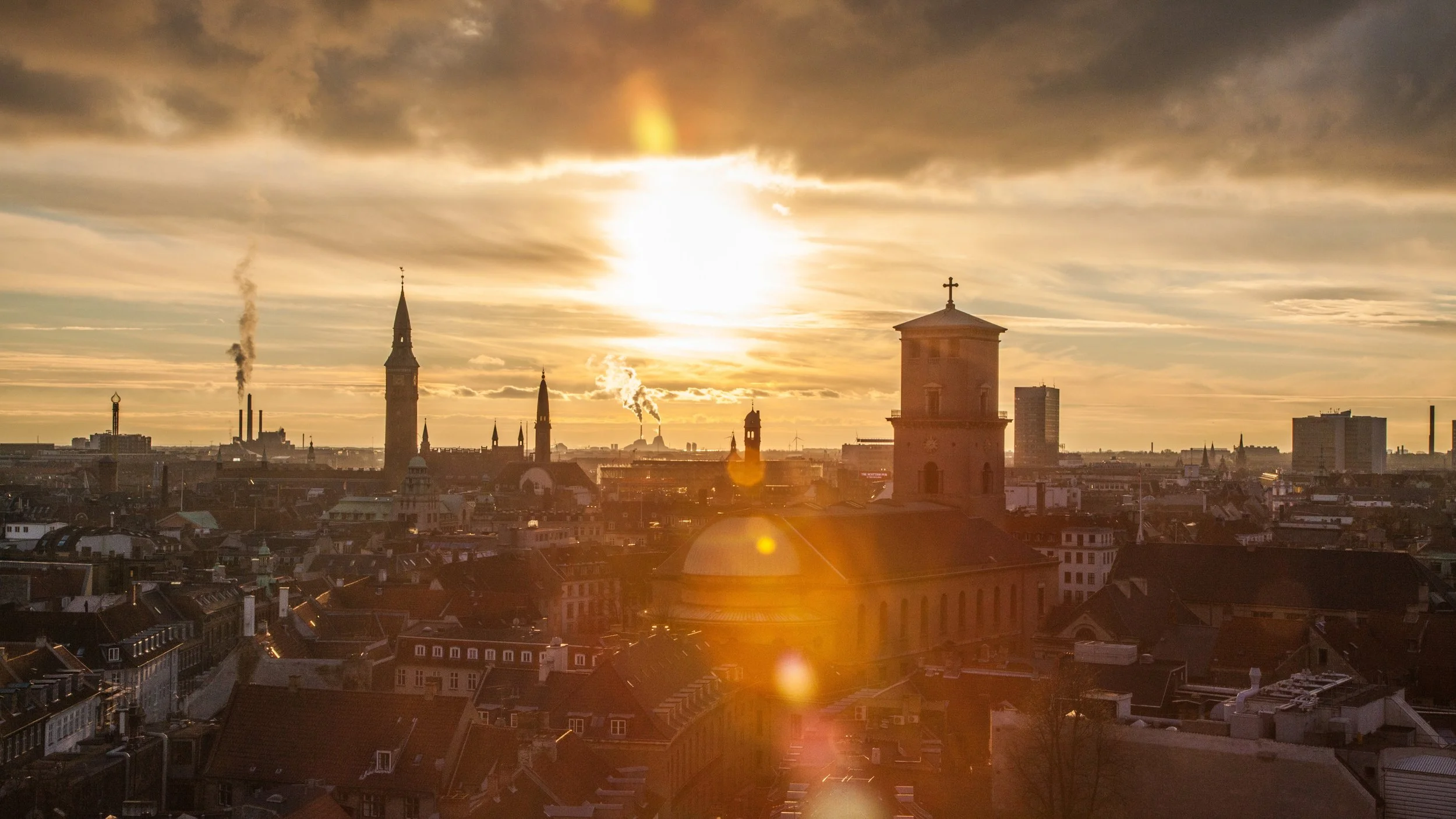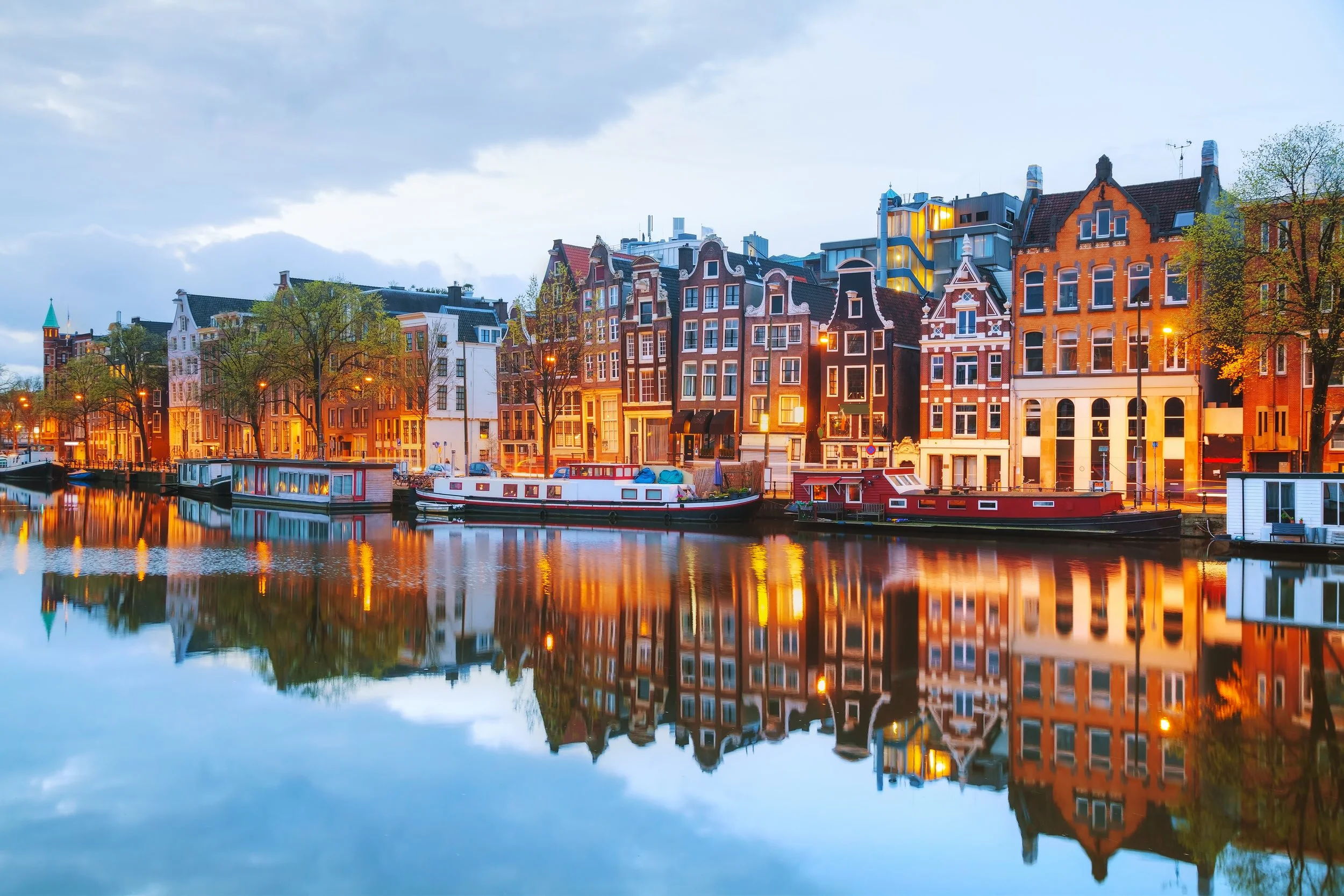Natural Cities | Amsterdam, Netherlands
What makes Amsterdam, a city in the lowlands of Europe, so attractive? I went there searching for answers. I found the obvious draws: beautiful architecture, a stunning canal system, innovative engineering and a unique cosmopolitan culture. But I felt there was a quality of the city that was being overlooked. It was present on every corner and on every street. It made the city feel alive, natural and comfortable, and it gave me a deep sense of tranquility, ease and relief. It was so simple. Yet, I fear many of us miss it.
The city streets, canals, alleys and public plazas were filled with nature, green space, trees, potted flowers, small gardens, vines and arbors.
Vegetation was everywhere. Trees lined the canals, and small boxes of flowers were on nearly every bridge. Many were quaint, unlevered, often uncomplicated and unkept. They were often overgrown and wild. Many were independent arrangements, personal touches by residents or small shop owners. These moments were everywhere I looked. And they cast beautiful shadows onto the architecture and cut the sun's harshness.
Cooling the streets of the back alleys, they lined the doors of small cafes, inviting people into the old canal houses. They were inconspicuously placed within the seating arrangements of street side restaurants. At first glance, they were nothing to write home about or to award a Pritzker Prize for. But these moments added up to more than the sum of their parts.
They created a consistent fabric and atmosphere of vibrant plant life throughout the city. But they're just plants. Why is an architect talking about a cluster of potted plants outside of a mom-and-pop café?
The abundance of plants made me feel that life and vitality were in the city. The place was alive and thriving. I could sense that life was all around me, and it suggested that people were there caring for the plants, and they took pride in their small shops, homes and cafes.
The labyrinth of planted streets was like a magnet, pulling me to explore an adventure deeper into the city, and I naturally gravitated down the streets with more dense planting, and noticed that the locals were gathering in the back alleys and cafes with the most lush vegetation. The city and its people seemed acutely aware of the effect the planting can have on a city and collectively took small actions to incorporate nature into their streetscapes. It seemed to be an unspoken understanding that everyone would contribute to bringing plant life back into the city.
I spoke with Esther, who lived in Amsterdam for nearly a decade, about the continual efforts to beautify the city with green space.
Esther: “So they, they started to reinforce a lot of these, canal walls, it is steel, steel structures. And it will actually probably take a while before they can reinforce them, because it's just a lot of work. They're doing it in Utrecht as well, and it will take them ten years to do all the canal walls.
Mitchell: “It's really nice though. I like it.”
Esther: “It looks amazing. It's like a forest in the canal. And you can feel it. It's a lot cooler from there as well. So, I really like it”
Mitchell: “It’s nice for the people on the street and in the canal”
We talked about a new method to repair old canal edges that were collapsing. When an old canal edge began to fail, the city decided to add a strip of wild meadow like vegetation on the side and edge of the canal. This was a practical solution from a structural engineering and construction perspective, but it also added so much more greenery to the city and improved the experience of the people on the water and the people walking on the streets. This was just one of the clever ways the city was adding green space.
I began to ask why it seemed like we were not reintegrating nature into our cities back home. Many areas of our cities, old and new, still look like barren concrete jungles. Do we not have time in our fast-paced schedules? Do we have other priorities? Do we have difficulty enjoying the little things in life because of the sense of larger stressors, obligations, and pressure looming over us? Or was it simply that we didn't know the positive impact of nature?
These ideas, which were once fringe, are now beginning to be studied and taken much more seriously in many cities worldwide. We're finding that urban environments with more vegetation and promote greater wellbeing and mental health in people. I feel this effect very strongly, and sense that plant life in our cities operates on deeper levels than just our sight, plants and cities give me a feeling of vitality and connection to the earth. It makes me feel less isolated and more connected. Being in nature does something to our biology and to our psyche. It seems that somehow, we may have forgotten this along the way, slowly becoming disconnected from ourselves and our natural environments. I feel that our cities would look significantly different from what they do today. If we reestablished and honored that more profound, primitive connection to nature and to ourselves. Changing our cities doesn't always require new, massive, monumental buildings or large-scale architectural interventions. Individuals’ small, authentic acts can catalyze more lasting and greater change by the shift of a culture and community values.
For me, part of being an architect is also bringing to light those small possibilities and shifts in culture. My offerings don't always need to be in the form of buildings, inspiring individuals to envision a different way to live their life and modify their environment by offering something small. Like a potted plant outside their doorstep is also part of my work.
If everyone were to make this small offering, imagine the beauty, character, and nature that would be added to our worlds, both inside and out. On my journey, I've been traveling the world, searching for cities that seem to help people thrive, be healthier, and live more authentic lives.
Let us know the cities and neighborhoods that you feel best and positively contribute to your well-being. Maybe we'll go there next. If you like this message, visit us at www.rostarchitects.com to view our architectural work, writing, interviews and other videos. Thanks so much.
MENTIONS
CityLoop, a brand of ArchiTour, offers private Architectural Tours in Amsterdam and Rotterdam for small private groups. They have an abundance of knowledge about the city, as well as the people and culture that are constantly shaping it. Thank you to Jelte Van Koperen for the tour around Amsterdam Noord, in depth knowledge on housing and behind the scenes of all the newest developments in the area.
About ROST Architects:
In addition to practicing architecture, principal and founder of ROST Architects, Mitchell Rocheleau AIA, searches the world to learn more about the buildings and cities humans have created, from the modern era to prehistory. Through writing, expert interviews, and video documentation, we hope to make our journey available and accessible. Our mission is to understand the environments humans have created throughout history, learn from the successes and failures, and contribute to designing a better future.









There are many reasons why a city becomes a point of destination. People are attracted to certain cities and travel from all over the world to see them. However, many people have trouble articulating why they enjoy them. They know something about it makes them feel comfortable, but they can't put their finger on it.